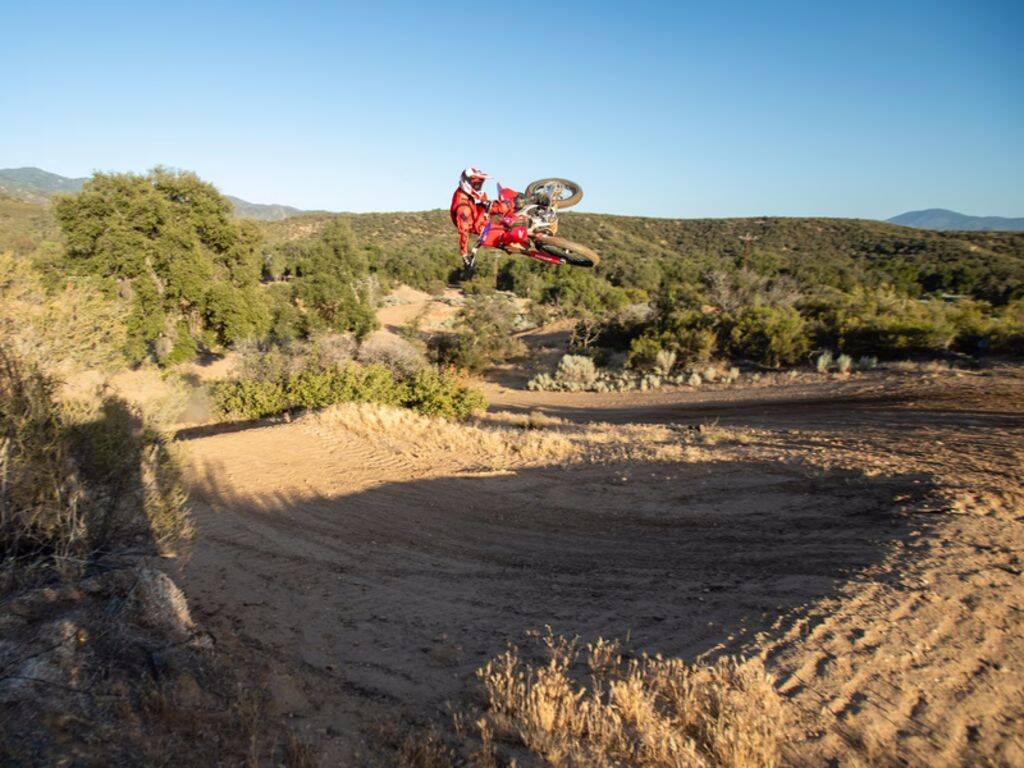AUTOMOBILES
How To Determine If you Have a Bad Clutch
How To Determine If you Have a Bad Clutch! A malfunctioning dirt bike clutch can make riding challenging and unsafe. How can you tell when it’s time for a replacement?
Identifying a defective clutch is essential for any dirt bike rider. The clutch connects the engine to the transmission, managing power delivery. If it fails, your ride may become erratic and hazardous. Common signs of a bad clutch include slipping, sticking, or unusual noises.
These problems can arise from normal wear and tear over time. Regular maintenance can help prevent significant damage. In this guide, we’ll explore the typical indicators of a failing dirt bike clutch. Recognizing these symptoms will help ensure your bike remains in excellent condition, allowing for safe and smooth rides. Let’s dive into the details.
Symptoms of a Bad Dirt Bike Clutch
Recognizing the signs of a failing dirt bike clutch is crucial for maintaining your vehicle. A defective clutch can compromise performance and safety. Here are some common symptoms to watch for.
Slipping Clutch
A slipping clutch occurs when engine revs increase without a corresponding increase in speed, indicating that the clutch isn’t fully engaging. This is particularly noticeable during acceleration or when tackling inclines.
Slipping can also generate excessive heat and wear, potentially causing further damage. It’s vital to address this issue promptly to avoid extensive repairs.
Difficulty Shifting Gears
Experiencing trouble when shifting gears may signal a bad clutch. You might find it challenging to shift smoothly, which can make riding less enjoyable and more risky.
Grinding noises while shifting could indicate worn clutch plates or a misaligned clutch cable.
Clutch Drag
Clutch drag occurs when the clutch doesn’t disengage completely, making it difficult to stop the bike or shift gears. You may feel the bike lurching forward even when the clutch lever is pulled.
This issue can also lead to excessive wear on transmission components, necessitating adjustment or replacement to maintain smooth operation.
Clutch Inspection Tips
Inspecting your dirt bike’s clutch is vital for ensuring optimal performance. Knowing how to identify potential issues can prevent more significant problems. Here are some inspection tips:
Visual Inspection
Begin with a thorough visual check of the clutch components. Look for signs of wear, frayed cables, leaks, or loose parts, which can indicate a failing clutch. Use a flashlight for better visibility in dim areas.
Examine the clutch plates and the clutch basket for grooves or notches that could impact performance.
Feel the Clutch Lever
Check the clutch lever for unusual resistance. It should operate smoothly. If it feels stiff or spongy, there may be an underlying issue. A stiff lever could mean cable problems, while a spongy lever might indicate air in the hydraulic system.
Ensure the lever’s free play is within the manufacturer’s specifications to avoid incomplete disengagement.
Listen for Unusual Noises
Engage the clutch and listen for any unusual sounds, such as grinding, squeaking, or rattling. These noises might signify worn components or alignment issues. If you hear anything unusual, inspect the parts closely for necessary adjustments or replacements.
Performance Issues
One of the first indicators of a bad dirt bike clutch is a decline in performance. Here are some common performance-related issues:
Loss of Power
A failing clutch can lead to a noticeable loss of power. You might find that your bike is slow to respond or struggles to maintain speed, particularly when climbing or accelerating quickly.
Watch for symptoms such as:
Difficulty gaining speed
A sluggish feeling
Inconsistent engine response
Overheating
Overheating can be another sign of a bad clutch. A malfunctioning clutch may force the engine to work harder, resulting in increased temperatures, which can damage other components.
Signs of overheating include:
Engine temperature exceeding normal levels
Unusual odors
Excessive heat emanating from the clutch area
Inconsistent Acceleration
If your bike shows uneven acceleration, it could indicate clutch problems. A slipping clutch makes it difficult to control the bike, negatively affecting ride quality.
Signs to look for include:
Jerking during acceleration
Delayed throttle response
Difficulty maintaining a consistent speed
Addressing these performance issues early can help prevent further damage. Regular maintenance and prompt repairs will keep your bike running smoothly.
Causes of Clutch Failure
Understanding the causes of clutch failure can aid in timely maintenance. Here are the main reasons:
Wear and Tear
Clutch plates naturally wear out over time due to regular use. This wear can lead to slipping and decreased performance. High temperatures can also damage the clutch material, making it less effective.
Improper Use
Aggressive riding and poor shifting techniques can result in clutch failure. Sudden acceleration and holding the clutch lever for extended periods can strain the clutch and accelerate wear.
Lack of Maintenance
Neglecting regular maintenance can lead to serious clutch issues. Dirt and debris can build up, causing friction and damage. Regular oil changes are crucial for ensuring smooth operation and extending clutch lifespan.
Diagnosing Clutch Problems
Knowing how to diagnose clutch issues is vital for safe riding. Here’s how to assess clutch conditions:
Test Ride
Start with a test ride to observe how your bike behaves. If the engine revs without acceleration, the clutch may be slipping. Jerking motions when engaging the clutch also indicate a problem. Listen for any unusual noises; grinding or squealing sounds are warning signs.
Check Clutch Cable
A worn or stretched clutch cable can create problems. Ensure the cable moves smoothly with the lever. Any resistance may indicate wear. Look for fraying or damage, and replace any compromised cables immediately.
Inspect Clutch Plates
Worn or damaged clutch plates can lead to slipping or jerking. Remove the clutch cover to examine the plates for wear, burn marks, or warping. Measure their thickness against manufacturer specifications; if they’re too thin, replacement is necessary. Always follow safety precautions during this process.
Preventive Maintenance
Regular maintenance is key to keeping your dirt bike clutch in excellent condition. Focus on adjustments, lubrication, and timely replacements to avoid unexpected issues.
Regular Adjustments
Ensure the clutch cable has the correct tension for smooth operation. Regular checks and adjustments help maintain optimal performance. A well-adjusted cable will facilitate smooth gear shifts.
Lubrication
Apply the appropriate lubricant to the clutch cable and moving parts. This reduces friction and prevents premature wear. Regular lubrication is essential for preventing clutch problems.
Timely Replacement
Promptly replace worn clutch parts to avoid further issues. If you notice slipping or shifting difficulties, it may be time for a replacement. Regular checks and timely replacements are vital for optimal performance.
Repair or Replace?
If your dirt bike clutch is causing issues, you might wonder whether to repair or replace it. Here are key points to consider:
Assessing Damage
Evaluate the extent of the damage. Look for signs such as slipping, sticking, or unusual noises. If the clutch plates are worn, a replacement might be necessary. Minor issues like cable adjustments can often be fixed with minimal effort.
Cost Considerations
Consider the cost of repairs versus replacement. While replacing the entire clutch can be costly, minor repairs may be more affordable. Compare parts and labor costs to determine the best financial decision.
DIY vs. Professional Repair
Decide whether to tackle repairs yourself or seek professional assistance. DIY repairs can save money but require specific knowledge and tools. Professional services may cost more but ensure quality work. Weigh the pros and cons before making a choice.
Choosing the Right Clutch
Selecting the right clutch for your dirt bike is crucial for optimal performance. Understanding the options available can help you make the best decision. Consider these factors:
OEM vs. Aftermarket
OEM (Original Equipment Manufacturer) parts are made by the same company as your bike, ensuring a proper fit and reliability. Aftermarket options may be cheaper and offer variety, but they might not fit as perfectly. Choose based on your specific needs and budget.
Material Considerations
Different materials offer varying strengths. Organic materials are common and affordable but wear out faster. Kevlar clutches last longer and handle heat better, though they come at a higher price. Consider your riding style when selecting material.
Performance Needs
Your performance requirements should guide your clutch choice. Casual riders may prefer basic clutches, while competitive racers will need high-performance options for better grip and durability. Match your clutch to your riding goals.
Frequently Asked Questions
How do you check a dirt bike clutch?
To check a dirt bike clutch, observe its engagement and disengagement. Look for any slipping or shifting difficulties, and inspect the clutch plates and springs for wear.
What are symptoms of a bad clutch?
Symptoms of a failing clutch include slipping gears, difficulty shifting, and unusual noises. You may also notice a burning smell and reduced power.
How often should a dirt bike clutch be replaced?
Typically, a dirt bike clutch should be replaced every 20-30 hours of riding, depending on usage and conditions. Regular maintenance can extend its lifespan.
Can you ride with a bad clutch?
Riding with a faulty clutch is not advisable as it can lead to further damage and unsafe conditions. Prompt replacement of a defective clutch is recommended.
Conclusion
Being aware of when your dirt bike clutch is malfunctioning is essential for safe riding. Pay attention to unusual sounds or changes in performance, and regularly check the clutch’s resistance. Proper maintenance can prevent major issues and ensure a smoother, safer ride. Keep your bike in excellent condition, stay safe on your adventures, and enjoy the ride!


